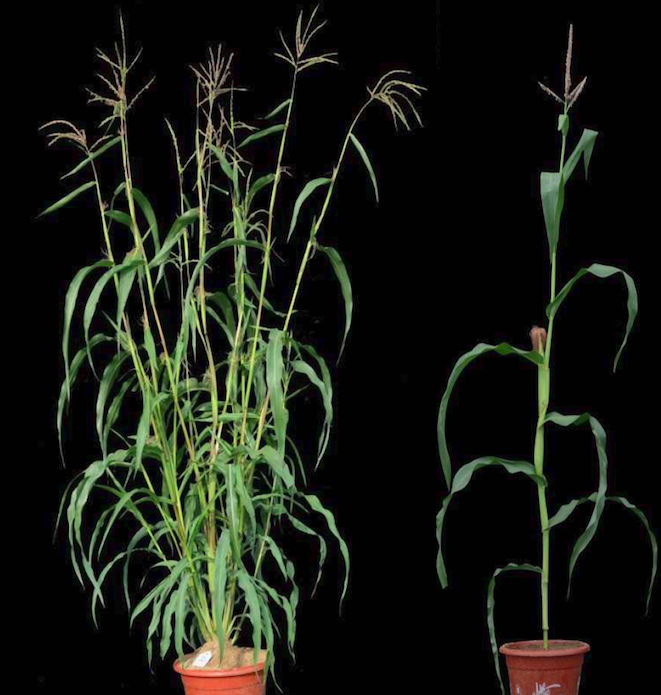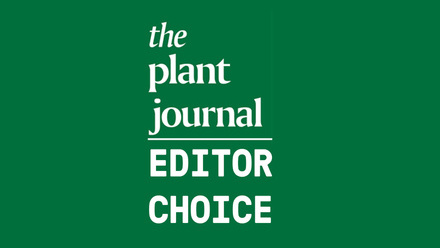JXB Volume 73, Issue 1 – Editor’s choice
This article highlights the following publication:
A gene regulatory network for tiller development mediated by Tin8 in maize
Zhelong Lin, Leina Zhou, Shuyang Zhong, Xiaojian Fang, Hangqin Liu, Yan Li, Can Zhu, Jiacheng Liu, Zhongwei Lin
Journal of Experimental Botany, Volume 73, Issue 1, 5 January 2022, Pages 110–122, https://doi.org/10.1093/jxb/erab399
A cornucopia of tillers
If there is one crop that is ubiquitous, albeit not immediately obvious, in everybody’s daily life it certainly is maize. Not only are corn cobs indispensable must-haves for every good BBQ party, corn syrup and cornflour also add flavour and texture to most processed food products we all consume on a daily basis. The milk we pour in our tea in the morning and the steak we enjoy for dinner at night most likely come from dairy cows and beef cattle feeding on maize silage. The powdery dust that inflates life-saving airbags in cars consists of corn starch, and maize is the dominant energy crop used in biogas plants for conversion into electrical power, or turned into biofuels. Life in the 21st century is without doubt “a-maizing”.
The history of modern maize remained a controversially debated mystery until very late in the 20th century. It has long been known that the origins of maize lie in southern Mexico where the domestication process began around 10,000 years ago. However, the identity of its undomesticated ancestor remained unknown since no wild counterpart with morphological resemblance could be found and was thus believed to be extinct. The hypothesis that the wild grass teosinte could be the progenitor of modern maize was dismissed as unlikely because of very little similarity between these species: in contrast to maize, which usually has one main stalk with a single large ear harbouring hundreds of kernels, teosinte forms many small ears with few hard-shelled seeds that sit on numerous tillers, lateral branches growing out from the base of the plant. The technological progress in genetic and molecular tools to investigate the evolutionary history of species, however, has by now confirmed the close kinship between teosinte and maize.
Interestingly, maize can still show phenotypical characteristics such as tillering under certain environmental conditions. Since tiller outgrowth may greatly affect yield, farmers strive to grow maize cultivars with low branching potential. The genetic and molecular basis of tiller formation is only partially identified, and more profound understanding is required to control this phenomenon in the field. Fortunately, with teosinte being identified as the wild ancestor of maize it can serve as a source of precious genetic diversity to study the genetic makeup underlying maize shoot architecture.

The temperate teosinte line (left) used in this study exhibits a typical shoot architecture with many tillers branching out from the plant base. Maize (right), by contrast, usually grows one main shoot bearing a single large ear (images from Lin et al., 2022, JXB).
In this issue of the Journal of Experimental Botany Lin et al. (2022) report the discovery of a novel gene locus on chromosome 8 called Tin8, which contributes to tiller growth. The authors made use of a temperate teosinte line that exhibits the typical branched growth form but also shows an early-flowering phenotype under long day conditions, which is uncommon for maize’s wild ancestor. Phylogenetic tree analysis suggested that the teosinte Tin8 allele in this line was introgressed from early-blooming domesticated maize, which makes this temperate teosinte optimal genetic material for studying tiller formation in modern maize. Analysing a population derived from a maize-teosinte cross the authors found that the teosinte Tin8 allele promoted tiller outgrowth whereas this was suppressed in plants with the maize Tin8 allele. High-resolution mapping revealed that the phosphatidylethanolamine-binding (PEBP)-related kinase Zcn8 corresponds to the Tin8 gene locus. Zcn8 has previously been described as a flowering time regulator but has not been connected to tiller formation. The conclusion that Zcn8 expression is linked to tiller growth was confirmed in rice and Arabidopsis mutants over-expressing the maize Zcn8 gene, which resulted in increased tiller and shoot branch formation. The authors found that the expression levels of Zcn8 were significantly lower in tiller buds of maize compared to teosinte, which was caused by differences in the gene promoter, the regulatory DNA sequence upstream of the Zcn8 coding region. In maize the promoter element repressed Tin8 transcription and consequently decreased the tiller number. Another key gene, Teosinte branched 1 (Tb1), has previously been described as a master regulator in tiller formation, and maize shows higher Tb1 expression compared to teosinte. Lin et al. found that Tin8 and Tb1 don’t act separately on lateral branching but interact closely, with Tin8 repressing Tb1 during tiller outgrowth. Both Tin8 and Tb1 have been shown to also control a number of other tiller-related genes that are, for example, involved in hormonal regulation and signalling. The results presented by Lin et al. establish a new node in a complex hierarchical regulatory network underlying a significant agronomic trait that distinguishes maize from teosinte.
Ancient Mexican farmers mastered the art of plant breeding long before Christopher Columbus set foot on American ground and initiated the global success of maize cultivation. Through careful selection and strategic planting they transformed maize into a crop with superior agronomic traits, since plants that grow few large ears with hundreds of non-dispersing, soft-shelled kernels on a single strong stalk are easier to cultivate, harvest, and consume.
The new findings by Lin et al. deepen our understanding of the molecular mechanisms underlying these agronomic traits in modern maize, which may enable us to improve this crop even further and adapt it to our changing world.





